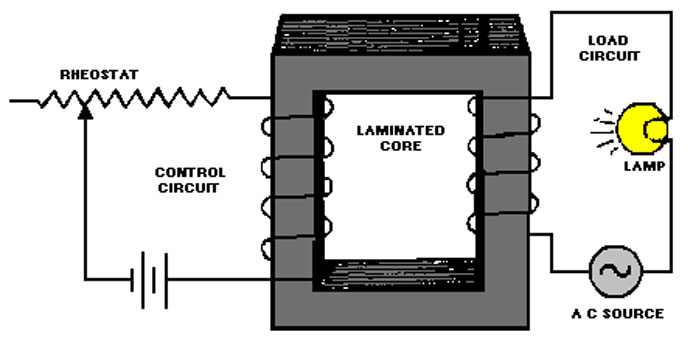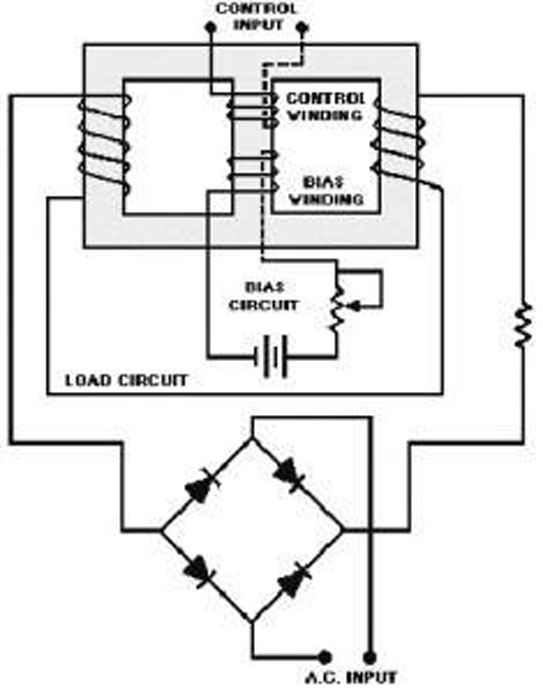Magnetic Amplifier
Sometimes abbreviated “Mag Amp,” a saturating inductor which is placed in series with a power supply output for regulation purposes.
A magnetic amplifier is an electromagnetic device that amplifies electrical signals utilizing a transformer’s core saturation principle, and the core non linear property. It consists of an iron core with two or more coils wound around it. Current control is achieved by varying the magnetic flux in the cores using the appropriate DC current through the control winding.
The static device has no moving parts, no wear mechanism and has good mechanical and vibration tolerance. In addition it requires no warm up time and can withstand momentary overloads better than the solid state devices. They are used in power supplies, in measurement systems, in nuclear power applications amongst other uses.
Construction and operation of a magnetic amplifier
A typical amplifier is made of two cores with an AC winding and a control winding. A small DC current supplied to the control winding alters the saturation levels of the core and is able to control large AC currents in the AC winding.
Figure 1 Basic construction of a magnetic amplifier – Image Credit
The amplifier uses the inductive element as a controlled switch. The coil is wound on a core having square B-H characteristics which gives the core two modes of operation. When the core is unsaturated, it causes the coil acts as high impedance that supports a large voltage with little or no current. When saturated, the coil impedance drops to almost zero and allows current to flow with very little voltage drop. The two modes thus enable the magnetic amplifier to act as an ideal switch with several benefits as compared to the switching regulators.
Factors that affect amplification in a magnetic amplifier
- Core cross section area
- Core magnetic path length
- Flux density gauss
- Magnetizing force
- magnet amp coil turns
Magnetic Amplifier Controllers
Circuits to control the magnetic amp may either be discrete components or specifically designed integrated circuits designed as magnetic amp controllers.
Types of Magnetic Amplifier circuits
There are two commonly used configurations namely the:
- Half wave magnetic amplifier: utilizes one half cycle of the AC supply
- Full wave Magnetic amplifier: utilizes both half waves of the ac supply
Figure 2: Full wave magnetic amplifier – Image Credit
Advantages of magnetic amplifiers
- No wear since there are no moving parts
- Good mechanical shock and vibration tolerance
- Doesn’t require warm up time
- Can withstand momentary overloads better than solid-state devices
- The cores can withstand neutron radiation
Limitations of magnetic amplifiers
- Low and limited single stage gain as compared to electronics amplifiers
- Frequency response limited to about one-tenth of excitation frequency
- Bulky
- Complicated when designing multistage amplifiers due to
Applications of Magnetic Amplifier
- As switching components in switched mode power supplies
- In radio communications high frequency alternators
- Arc welders
- Measuring high dc voltages
- stage lighting
- nuclear plants applications
- Speed regulators in paper, steel and other assembly lines

